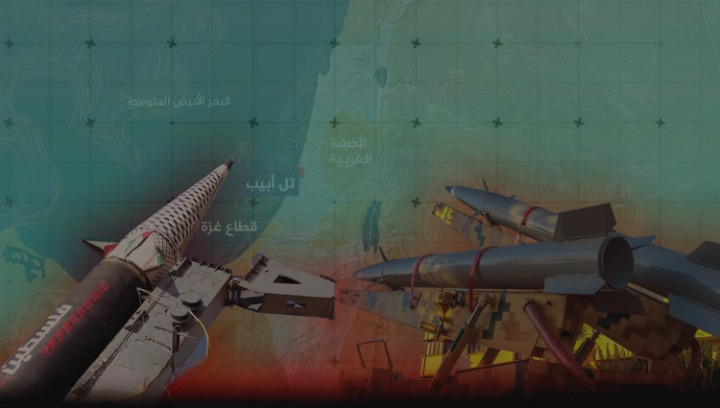Yemeni Missiles: Sovereignty in Flames Defeats the Enemy and Reshapes the Deterrence Equation
Yemen at the Heart of the Battle of Will — The Zionist Entity Reels Under Fire
At a time when normalization agents race to slaughter Palestine from vein to vein, and the world shamelessly maintains its silence in the face of an all-out genocide against a defenseless people, Yemen continues its eternal revolution—September 21st Revolution—fulfilling its religious and historical duty in defending the causes of the Ummah, foremost among them, Palestine.
The missile and drone strikes launched from Yemen toward the Zionist depth are a sincere expression of this commitment—no longer mere slogans, but direct action that has altered the regional balance of deterrence.
Sana’a: Where Deterrence Surprises Begin
Since the launch of Yemeni operations in the Red Sea and Bab al-Mandab, through the targeting of U.S. ships and aircraft carriers, and culminating in intensified strikes on Lod Airport (“Ben Gurion”), and strategic targets in Jaffa, Ashkelon, and Eilat, the Yemeni Armed Forces have demonstrated exceptional operational readiness and an unprecedented ability to maneuver aerial and missile forces—despite a suffocating blockade and dire economic conditions.
Yemen’s missile forces confirmed that their operations are not symbolic. They have used advanced hypersonic ballistic missiles of the “Palestine-2” class, grounding air traffic in the Zionist entity and forcing millions of settlers into shelters. Meanwhile, precision drone operations have struck critical infrastructure deep inside occupied territory, further disorienting the occupation and stripping it of control.
When Yemen Becomes a Strategic Nightmare for the Zionists
Hebrew media and enemy leaders alike now acknowledge that Yemen is no longer a “distant” or “irrelevant” front—it has become a growing strategic threat to Israel’s security. Zionist General Amir Noe openly stated: “The Yemeni forces have become an increasing security and financial burden on Israel,” citing their unexpected development of offensive and organizational capabilities.
Publications such as The Jerusalem Post admit that the recurring Yemeni strikes are hindering Israel’s economy and depleting its defense systems. Channel 12 in Israel even declared: “The Yemenis are the only force in the region capable of sustaining war and enduring long-term confrontation.”
The September 21st Revolution: Backbone of Yemeni Sovereignty
Yemen’s forward position in confronting the occupation and its Western backers did not emerge in a vacuum. It is the direct result of the September 21st Revolution, which reclaimed sovereignty from Saudi and American tutelage, liberating Yemen’s military doctrine from the grip of foreign dependency.
Since that revolutionary turning point, Sana’a has redefined its national and regional priorities—no longer a mercenary force for imperialist projects, but a sovereign voice of Arab dignity. Yemeni power today is not merely a matter of rockets—it is a power rooted in identity, principle, and unyielding will.
Sovereign Decision-Making in an Era of Submission: The U.S. Oil Ban as a Model
In an unprecedented move in the Arab world, Yemen imposed a total ban on U.S. crude oil (HS Code 2709.00) from its waters and ports, whether directly or through intermediaries. This decision sent Washington’s policymakers and Zionist lobbies into panic, establishing Sana’a as a capital of full sovereign defiance—while Gulf capitals tremble at even voicing disapproval toward Washington.
The People and the Army: United in the Trenches
What sets the Yemeni model apart is its rare internal cohesion: a unified front where the people actively support the resistance with weekly million-strong marches chanting for Palestine and condemning aggression, as drones buzz over Ashkelon and missiles rain on Jaffa and Eilat. This harmony between leadership, army, and people is an invincible asset that the enemy struggles to fracture—despite all its psychological and military campaigns.
The Failure of U.S. Aggression and the Collapse of Zionist Deterrence Myth
Netanyahu and other Israeli leaders try to paint a false picture of their ability to “deter Yemen,” but reality—as reflected even in Western media—says otherwise. Greece’s Ekathimerini newspaper confirmed that Yemeni forces inflicted substantial operational losses on the U.S. Navy, prompting the Pentagon to reassess the viability of aircraft carriers and advanced warplanes in confronting Yemeni resistance.
Thus, any Zionist threat toward Yemen is mere political barking—masking humiliating field failures and a chronic inability to halt Yemeni strikes. The Yemeni Armed Forces are now redefining deterrence with a new equation: “A strike for a strike… or even more.”
Yemen Redefines the Resistance Axis
Yemen’s role in confronting the Zionist enemy can no longer be viewed as auxiliary or situational. It has become a central pillar of the Axis of Resistance. With every strike launched from Yemen, the enemy’s fragility is laid bare, and the illusion of “absolute power” crumbles—an illusion it has marketed for decades.
Today, Yemen has enforced a new doctrine: For Gaza, Israel can be struck from Sana’a. For Jerusalem, the fronts from Lebanon to Iraq to Iran can be activated—an interlinked, unwavering resistance fabric that believes solely in freedom and independence.
Yemen: The Sword of Freedom Against Tyranny
In the face of Zionist and American war machines, Yemen has proven that it is not a marginal player. Its missiles, drones, sovereign decisions, and unified popular support have made it a formidable force, a voice that cannot be ignored, and a sword raised high against Zionist oppression and global arrogance.
As long as Yemen has men who honor their oath to God, the battle continues—and victory is a divine promise that will never fail.

